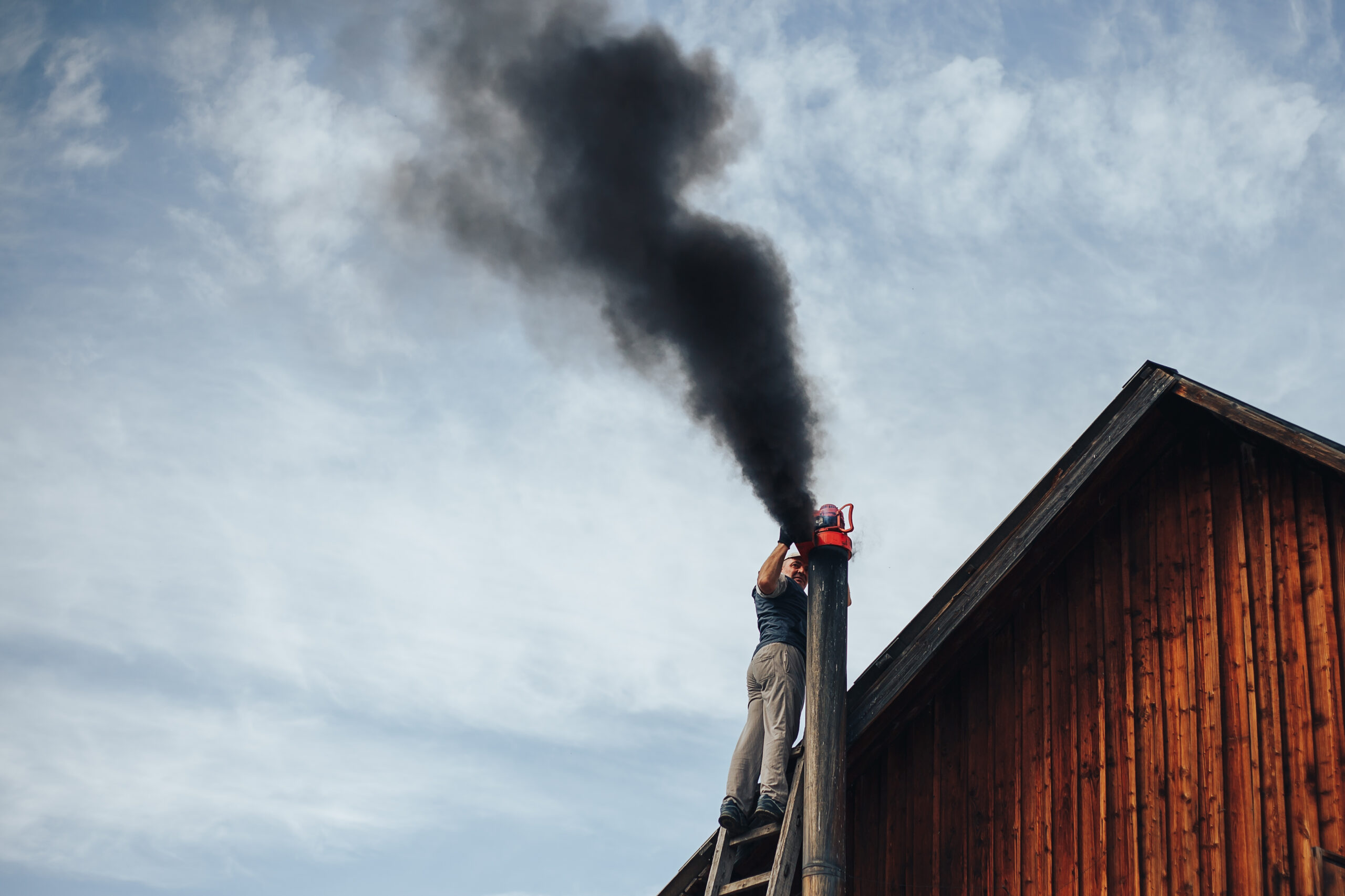When preparing for cozy winter evenings by the fireplace, one crucial task should never be overlooked: chimney cleaning. According to the National Fire Protection Association, failure to clean chimneys is a leading cause of home heating fires, resulting in more than 25,000 residential fires each year in the United States.
As a homeowner, you face an important decision: should you clean the chimney yourself or hire a professional chimney sweep? This guide will help you compare both options, understand the risks, and make a choice that protects your safety and peace of mind.
DIY chimney cleaning: tools, steps and safety risks
Essential tools and equipment
A basic DIY chimney cleaning kit usually includes:
- chimney brushes in different sizes (steel or poly bristles)
- extension rods (flexible or rigid)
- drop cloths and plastic sheeting
- shop-vac or heavy-duty vacuum
- flashlight or headlamp
- safety equipment (goggles, mask, gloves)
- ladder for roof access
The DIY process
- Seal off the fireplace and nearby area
- Access the roof and chimney top
- Insert the chimney brush and scrub from top to bottom
- Vacuum loosened soot and creosote
- Inspect for visible damage or blockages
Hidden risks of DIY chimney cleaning
Safety hazards:
- falls from rooftops
- inhaling soot, creosote and toxic particles
- potential damage to chimney liner or flue
- fire risk from incomplete cleaning
Quality concerns:
- hard-to-reach areas left dirty
- structural issues and cracks go unnoticed
- no professional assessment of needed repairs
Even careful homeowners may overlook early signs of deterioration, which can lead to carbon monoxide leaks, fire hazards or costly future repairs.
Professional chimney sweep services: certification, equipment and guarantees
Certification and expertise
Certified chimney sweeps often hold credentials from:
- Chimney Safety Institute of America (CSIA)
- National Chimney Sweep Guild (NCSG)
- National Fireplace Institute (NFI)
These certifications require extensive training, continuing education and strict safety standards.
Advanced equipment and techniques
Professionals use specialized tools that go far beyond DIY kits:
- rotary cleaning systems for stubborn creosote
- HEPA vacuum systems for safe dust control
- video cameras for internal inspections
- professional brushes designed for each chimney type
Their services often include inspections, draft testing, moisture checks, minor repairs and detailed reports with photos.
Insurance and guarantees
Reputable services also provide:
- liability insurance for property protection
- bonding for added security
- service warranties
- follow-up support
| Factor | DIY approach | Professional service |
|---|---|---|
| Initial cost | $50–150 (equipment) | $200–400 (average service) |
| Safety risk | High (falls, toxic exposure) | Minimal (insured experts) |
| Cleaning quality | Variable, often incomplete | Thorough and certified |
| Problem detection | Limited to obvious issues | Full inspection with equipment |
| Tools | Basic consumer brushes and rods | Professional-grade systems |
| Time investment | 4–8 hours including preparation | 2–3 hours of professional work |
| Guarantee | None | Warranty included |
| Long-term value | Risk of costly mistakes | Preventive maintenance saves money |
Cost analysis: why professional service saves money
DIY may seem cheaper at first, but hidden costs add up:
- equipment $100–300
- possible property damage worth thousands
- health risks without proper protection
- time investment a full day or more
- calling a professional later to fix mistakes
Professional chimney sweep value:
- complete cleaning and inspection
- early detection of problems
- insurance coverage during service
- expert maintenance recommendations
- peace of mind knowing your home is safe
Not sure if DIY is worth the risk? Schedule a certified chimney inspection today and protect your home with trusted expertise.
Expert opinion on DIY risks
“Homeowners often underestimate the complexity of chimney systems. What looks like a simple cleaning can quickly become dangerous when structural issues, wildlife or hazardous creosote are involved. Too many DIY attempts lead to fires or costly repairs that could have been avoided with professional maintenance.”
— Fire Safety Institute
Warning signs that require professional help
- heavy, tar-like creosote buildup
- white staining on chimney exterior
- rust on damper or firebox
- damaged crown or missing cap
- bird or animal nests inside chimney
- strong odors from the fireplace
When DIY may be acceptable
Very limited situations where light DIY maintenance could work:
- fireplace used less than 10 times per year
- professional cleaning done within the last 6 months
- no visible damage or odors
- homeowner has experience and proper equipment
- easy roof access and safe conditions
When professional service is essential
Professional chimney sweep services become non-negotiable if:
- fireplace is used more than 20 times a year
- creosote buildup or odors are visible
- structural issues or damage are present
- it is the first cleaning in a new home
- you are preparing to sell the property
- insurance requires annual inspections
When searching for a chimney sweep near me, always check for CSIA certification, insurance and positive local reviews.
Book your professional chimney inspection
Do not risk your family’s safety. A professional chimney sweep offers:
- certified expertise you can trust
- comprehensive safety inspection
- advanced cleaning equipment
- insurance protection during service
- long-term maintenance planning
Ready to book your chimney sweep near me? Contact certified local experts for a free estimate and fast scheduling.
Conclusion: safety and long-term value
While DIY chimney cleaning may look like a budget-friendly option, the risks and hidden costs outweigh the savings. Professional sweeps bring certified expertise, specialized tools and insurance protection that ensure safe operation of your fireplace.
Annual professional maintenance is the best investment in your home’s safety, comfort and value. Choosing the best chimney sweep means protecting your family and avoiding expensive repairs. Peace of mind is always worth it.






